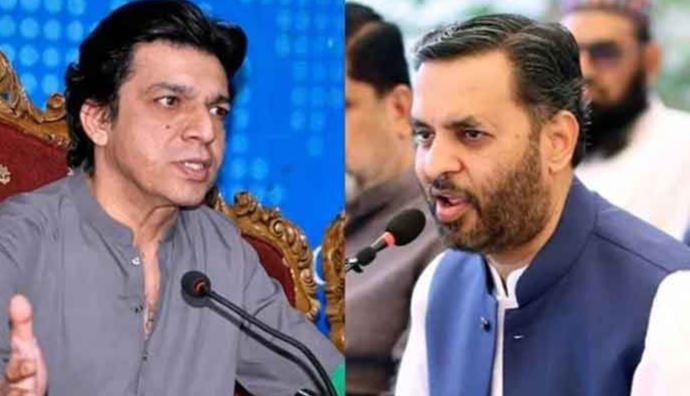ISLAMABAD – The Supreme Court of Pakistan on Friday accepted apologies from Senator Faisal Vawda and MQM leader Mustafa Kamal in a contempt of court case, thereby withdrawing the contempt notices against them.
A SC three-member bench led by Chief Justice Qazi Faez Isa and comprising Justice Irfan Saadat and Justice Naeem Afghan heard the case.
Faisal Vawda and Mustafa Kamal appeared before the court personally.
At the outset of the proceedings, Mustafa Kamal’s lawyer, Farogh Naseem, argued that Kamal had offered an unconditional apology and had expressed regret in a press conference.
The Chief Justice asked Vawda if his lawyer was present and if he had also apologized. Vawda confirmed that he had indeed apologized.
Representing the TV channels, Advocate Faisal Siddiqui appeared before the court.
The Chief Justice inquired about the absence of written responses from any media outlet. Siddiqui explained that there were no show-cause notices issued to the media institutions.
Justice Qazi Faez Isa questioned if they intended to issue show-cause notices to the media outlets. Justice Aqeel Abbasi mentioned that at least a signed response from a responsible officer of the media outlets should have been submitted.
The Chief Justice while addressing Siddiqui remarked that he had not complied with the court’s orders. Siddiqui responded that all representatives from the channels were present in court, but the Chief Justice observed that no written responses had been submitted by the channels.
Siddiqui explained that he had submitted a written response himself.
The Chief Justice observed that the response required signatures from the channels, not just the lawyer’s. Siddiqui argued that if there were show-cause notices, the responses would have been signed by the channels.
The Chief Justice emphasized that press freedom and freedom of expression are two different things and questioned whether airing contemptuous material does not constitute contempt of court.
Siddiqui stated that the clarification of press freedom has been ongoing for 200 years.
Justice Isa questioned why not start from 1400 years ago and whether Siddiqui preferred mentioning 200 years because that was when the US gained independence.
Siddiqui explained that he mentioned 200 years because it marked the beginning of modern constitutions, prompting the Chief Justice to advise him to read the preamble of the Constitution, which begins with “Bismillah-ir-Rahman-ir-Rahim” and contains no mention of the modern age.
The Chief Justice questioned the necessity of live broadcasting press conferences and emphasized the moral, ethical, and cultural responsibilities in media reporting, asking how much revenue was generated from airing the contentious press conference.
Siddiqui requested time to seek instructions from his clients, to which the Chief Justice suggested they could summon each client individually for questioning.
The Director of News from a private TV channel, Rana Jawad, took the stand, and the Chief Justice asked how many times the press conference was aired and how much revenue was earned. Jawad said the press conference was aired in 11 to 12 bulletins, but he only handled editorial matters, not finances.
The Chief Justice noted that Siddiqui’s signature was on the response and suggested issuing a contempt notice to him. Siddiqui accepted full responsibility for the response.
Justice Isa remarked that Siddiqui had admitted at least one press conference was contemptuous. Siddiqui clarified that he had stated it appeared to be contemptuous, to which Justice Isa cautioned against making such claims without substantiation.
The Chief Justice asked if Siddiqui’s assertion that the press conference must be covered was true even if the content was defamatory or abusive, and he reiterated that moral and ethical standards should guide media coverage.
Attorney General then addressed the court, and the Chief Justice asked if a lawyer could sign a response on behalf of TV channels.
Justice Abbasi inquired about the Attorney General’s opinion on the conduct of the channels, to which the Attorney General responded cautiously, indicating his potential role as a prosecutor if the proceedings advanced.
The court then took a short recess.
The court had previously ordered Vawda and Kamal to appear in person and had directed all news channels to submit their responses within two weeks.
In the previous hearing, the court had rejected Kamal’s immediate apology request, and Vawda had submitted an unconditional apology to the Supreme Court in his second response.
Vawda had initially refused to apologize in his written response to the contempt of court case, related to his criticism of the judiciary during a press conference at the Islamabad Press Club on May 15.










